Oil Transportation in Extreme Environments
Transporting oil from production sites to refineries, markets and other facilities is a difficult task under normal circumstances. When operations are extended to extreme environments, such as the Arctic, high-altitude terrains and deep oceans or political unstable regions, the challenges increase dramatically. To ensure safe, efficient and sustainable oil transportation in these regions requires sophisticated technology, meticulous planning and compliance with international standards.
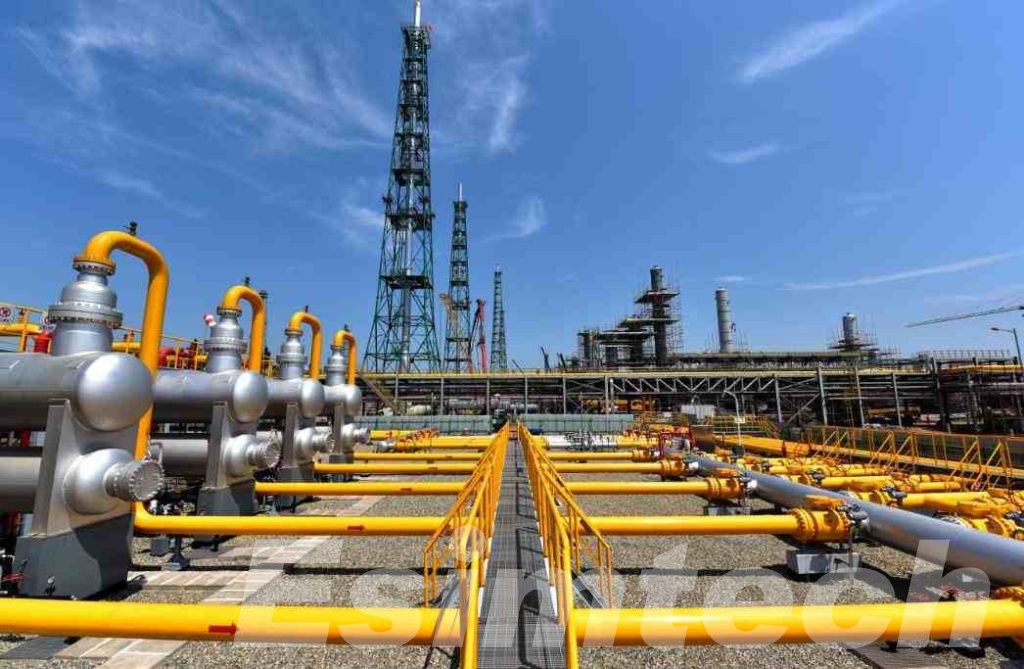
Challenges of Oil Transportation in Extreme Environments
| Environment Type | Key Challenges | Description |
| Arctic Regions | Ice coverage, instability of permafrost, extreme cold | Ice can cause damage to tankers and pipelines. Permafrost melts can threaten the structural solidity. |
| Desert Areas | Sand erosion water shortage | In the summer, high temperatures cause material expansion Sand can damage equipment; inadequate water to run operations. |
| Deep Offshore | High pressure, saltwater that is corrosive extreme sea conditions | Subsea pipelines suffer mechanical stress, and storms interrupt tanker movements and stability of platforms. |
| Mountainous Terrain | Landslides, seismic activity difficult access | Earthquakes and unstable slopes could damage pipelines. Remote areas make maintenance difficult. |
| Remote Wilderness | Infrastructures are not as developed, and ecological sensitivity is a concern | Inaccessible roads or power access can make it difficult to manage the logistics, and spills could cause permanent damage to the ecosystem. |
| Conflict Zones | Threats to security, threats of sabotage regulatory uncertainty | Pipelines are prone to attack and unstable policies can add the risk of operations. |
| Frozen Ground/Permafrost | Soil movement, pipeline stress | Temperature fluctuations during the winter months create ground heaving and risk cracks in surface or underground pipelines. |
| Changing Climate Conditions | Infrastructure degradation, unpredictable weather | Ice melting, more severe storms and rising sea-level strain existing transportation systems. |
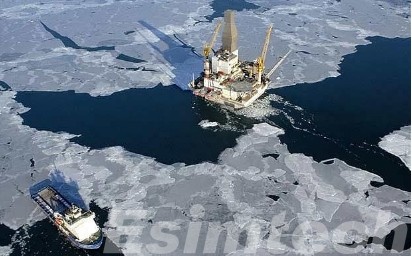
Methods and Adaptations for Oil Transportation in Extreme Environments
1. Pipeline Transportation and Its Adaptations
Pipelines have become the popular method of transporting crude oil across ground, and in extremely environments, they need major modifications. For Arctic zones, for example pipelines are built on top of the ground and supported by horizontal supports to keep the heat generated by pipe from melting permafrost that could lead to soil subsidence and structural collapse. Pipelines are also insulated and are often fitted with heat pipes to regulate the balance of thermal energy.
In regions that are active seismically pipelines are built with flex joints and bendable materials that take on ground movements in earthquakes. Engineers frequently employ trenchless construction techniques such as horizontal directional drilling to run pipelines through terrain that is sensitive and faultlines. Furthermore, pipelines that are located in deserts are usually covered using materials that resist wear and corrosion due to blowing sand or extreme heat.
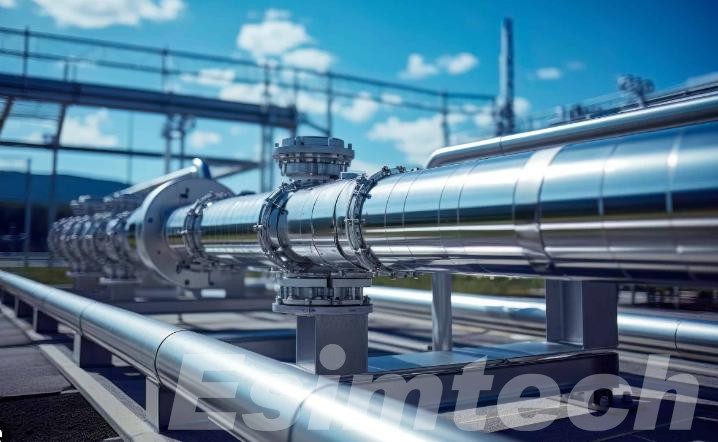
2. Ice-Class and Desert-Adapted Oil Tankers
If pipelines are not feasible, especially for water distances that are long-distances–oil is transported using tankers or ships. In the polar regions special tankers designed for ice conditions are utilized. They are equipped with robust hulls designed to withstand thick ice and powerful engines for navigating partially frozen waters. Ice-breaking escort ships are often accompanied by tankers along Arctic shipping lanes. real-time navigation systems based on satellites help to determine safe routes in frozen waters.
In desert areas tanks and other support vehicles need to endure the extreme temperatures, high sand and isolation. Tankers are outfitted with special filtering and cooling equipment that deal with dust intrusion and extreme temperatures. Storage of fuel in container is specifically designed to reduce the possibility of evaporation as well as thermal expansion. Additionally the logistics of deserts typically require convoy plans and regular maintenance stations to minimize the chance that mechanical malfunctions could occur.
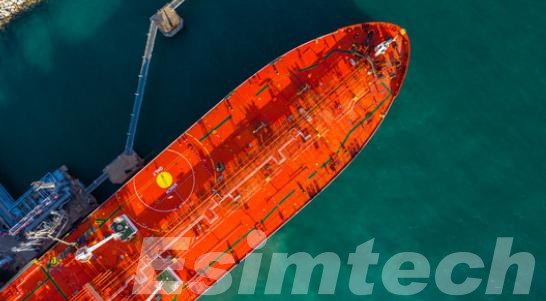
3. Subsea Pipelines and Floating Platforms
In offshore deepwater environments, subsea pipelines are commonly utilized to connect oil wells with refineries onshore as well as floating storage and offloading (FPSO) units. They must withstand high temperatures, pressures and extreme cold and saltwater that is corrosive. To ensure their strength and durability, engineers employ sophisticated coating materials and cathodic protection systems and then bury pipelines beneath the seabed or cover them with rocks that are and dumping.
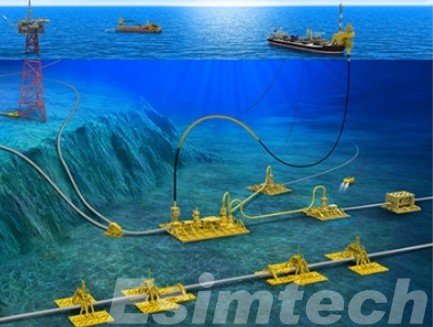
The floating platform and FPSOs are built to be able to adapt to the extreme marine conditions. These structures are supported by dynamic positioning systems that permit the structure to stay stable even in the midst of violent storms. Offshore pipelines are frequently inspected with ROVs, which are remotely controlled automobiles (ROVs) or autonomous underwater vehicle (AUVs) which are crucial to identify corrosion, leaks or mechanical stresses at deep depths that are not accessible to divers.
4. Air and Rail Logistics in Remote Regions
In remote or mountainous regions, in particular those where roads and pipeline accessibility is restricted transportation by rail and air could be essential. Helicopters can be used to transport small amounts of oil, vital personnel, or components for pipeline repairs. When terrain permits trains specially designed for this purpose can be used to transport oil through snowy or mountainous regions. Trains are equipped with thermal insulation and tank cars that can withstand vibration to shield the cargo of oil from freezing or becoming unstable during transport.

5. Remote Monitoring and Automation Technologies
The most important modifications for oil transport in extreme conditions is the utilization for remote monitors. Supervisory Control and Data Acquisition (SCADA) systems are utilized to check the pipeline’s pressure, speed of flow and temperature in real-time. When they are installed on pipelines that traverse tough environments, these systems enable operators to identify and react to leaks, ruptures, or other anomalies without the requirement for on-site inspections.
In the offshore and Arctic regions drones as well as satellites, are becoming increasingly employed to inspect and survey transportation infrastructure. Unmanned drones are vital instruments to ensure safety in operation without exposing workers to a risk that is not worth it.
Environmental and Safety Considerations for Oil Transportation in Extreme Environments.
1. Protecting Fragile Ecosystems
Extreme environments typically coincide with ecologically sensitive zones. In the Arctic for instance oil spills could be devastating because of the slow degrading of hydrocarbons at frigid temperatures as well as the difficulties to conduct clean-up operations in freezing waters. In the same way, deserts are the home of rare fauna and flora that are terribly affected by water pollution or soil resources being depleted by transport actions.
To limit the risks To reduce the risk, businesses are required to carry out thorough Environmental Impact Assessments (EIAs) prior to launching transport projects. These studies pinpoint the potential dangers to the biodiversity of land as well as water sources, then suggest ways to minimize these risks. It is also crucial to choose the right route and transportation corridors are designed to avoid areas with significant ecological importance or a high risk of vulnerability.
2. Spill Prevention and Containment Systems
The prevention of spills is the top goal in the oil industry especially in locations which response efforts are hindered due to the distance or extreme weather. Tankers and pipelines are fitted with the latest containment technology, like double-hulled designs, leak detection sensors and automated shut-off valves. Subsea pipelines have additional barriers like external coatings as well as cathodic protection systems are used to stop the corrosion and ruptures.
To ensure emergency containment, businesses have specialized equipment for spill response close to areas of high risk. For Arctic zones, for example the response kits contain dispersants with ice resistance, ice-resistant booms that work with water that is cold, as well as vessels that break ice. Desert operations could rely on berms as well as impermeable lines to keep out spilled oil and to recover it before it can contaminate groundwater.
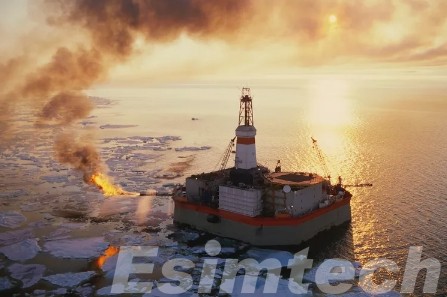
3. Worker Safety in Harsh Conditions
Extreme conditions pose serious security risks to employees. In cold climates, employees are at risk of hypothermia, frostbite, and equipment malfunctions caused by freezing. When it is hot, the risk of dehydration heatstroke, and other mechanical problems are common. Offshore platforms are exposed to hazards like rough seas, high winds and the isolation of medical facilities.
To safeguard workers, companies have comprehensive safety procedures in place, including forecasting systems for weather and emergency evacuation procedures as well as mandatory protection clothing. Safety training programs in oil transportation, are specifically designed for the specific environment, such as winter survival courses, or danger awareness in the desert. Furthermore, many companies use automated remote surveillance and monitoring to eliminate the requirement for on-site staff which reduces the risk of exposure for humans to.
4. Monitoring and Early Detection Systems
Continuous monitoring is vital for detecting issues earlier which could cause accidents or environmental damage. Supervisory Control and Data Acquisition (SCADA) systems are utilized to monitor the pipeline’s pressure, flows and temperatures in real-time. They can warn operators of any anomalies that could be which could indicate a leak or structural defect which allows for rapid shut down and quick response.
Drones, satellite imagery remote sensors also increase monitoring capabilities, particularly in remote areas that are difficult to reach. Thermal cameras, for instance, detect temperature fluctuations that are abnormal within pipelines that are submerged in snow or sand. This could indicate the possibility of a leak.
5. Regulatory Compliance and International Standards
Transportation of oil in extreme conditions is controlled by stringent international and national rules and regulations. For Arctic water, for example it is the Polar Code established by the International Maritime Organization (IMO) stipulates environmental and safety requirements for vessels operating in the polar regions. Pipeline projects in areas that are sensitive to pollution have to be in compliance with the rules for environmental protection enforced through local agencies as well as global frameworks, like the Equator Principles.
Failure to adhere to the regulations can lead to sanctions from the law, reputational damage and even operating shutdowns. Thus, companies invest massively in compliance programs, audits, and transparent reporting in order to fulfill the requirements of regulatory agencies and to build public confidence.
6. Community Engagement and Risk Communication
Effective risk management also requires communicating between local residents, specifically Indigenous communities that could be directly impacted by the oil transportation activities. Participation in community consultation is crucial to identify local issues and securing the social licence for operation, as well as making sure that emergency plans are based on local conditions.
Certain companies work with local residents as environmental monitors, or even first emergency responders. This is not just a way to build local capacity, but it also increases the speed and efficiency for any response to emergencies.
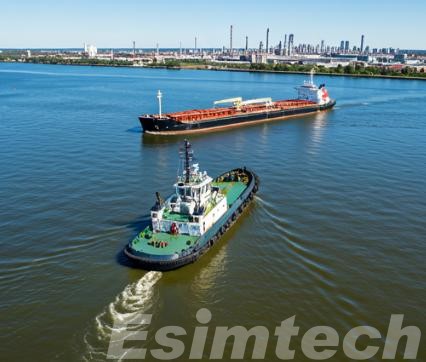
Key Areas Simulation Technology is Used for Oil Transportation in Extreme Environments
Simulation technology plays an integral function in optimizing the transportation system in such challenging conditions. From the virtual simulation of pipelines, to the predictive maintenance and route optimization, the simulation tools provide crucial information that can improve the safety, efficiency and sustainability.
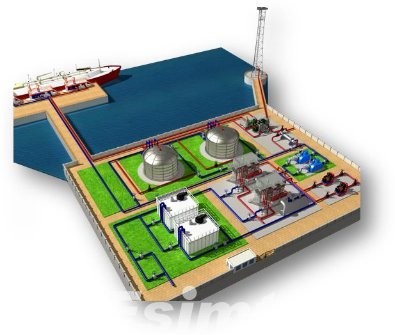
- Virtual Modeling of Transportation Infrastructure
One of the main oil transportation simulations is the model of the infrastructure for transporting oil. Engineers employ computation fluid dynamics (CFD) and finite element analysis (FEA) to develop and test tanker structures, pipelines and pumping systems in the face of the conditions of simulated environmental load. For example when working in Arctic areas, the simulations evaluate the response of pipeline materials to freezing and thawing cycles permafrost motion, or the accumulation of ice. In offshore locations hydrodynamic modeling can help evaluate the effect of ocean waves, currents and pressures in the ocean on subsea pipelines as well as floating platforms.
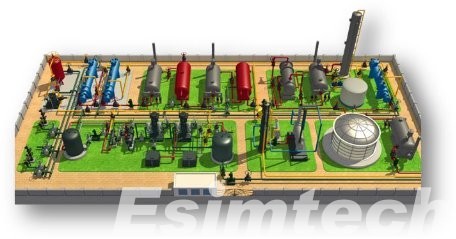
By identifying the potential points of failure prior to building, the simulations can lead to efficient designs that are economical and resistant to environmental stresses.
- Route Planning and Optimization in Harsh Terrain
Simulations are crucial for identifying and optimizing transport routes within geologically complex or in weather-challenged areas. Geographic Information Systems (GIS) together alongside digital elevation models as well as weather forecasting data, allows planners to test different routing options for pipelines, trucks or tankers. In mountainous areas such as the ones in the Alps the simulations take into account the stability of slopes seismic activity, slope stability, and the risk of avalanches to identify the most secure and economically feasible route in pipeline development.
To facilitate marine transport, models for ice movement along with sea state prediction tools model ice coverage as well as wave conditions along route for tankers. These models assist operators in avoiding the areas prone to ice and pick routes with the least environmental risk.
- Risk Assessment and Emergency Scenario Simulations
Emergency training simulation can also assist with assessments and preparation of the risks. Operators utilize digital twins and interactive simulations to determine the response of their transportation systems to various failure scenarios such as spills of oil or equipment malfunctions extreme weather conditions. Simulations can help to identify areas of weakness and help determine the location of safety devices like shut-off valves, spill containment structures, as well as monitor stations that are remote.
The emergency drills that are conducted becoming increasingly performed in virtual environments with scenarios-based simulations. These simulations that are immersive prepare people for emergencies in real-world scenarios by reenacting dangerous situations such as the rupture of pipelines on frozen ground, or tanks catching fire due to equipment in storms.

- Flow Assurance and Viscosity Modeling
Flow assurance is a significant issue in extreme environments, where the characteristics of oil can be affected by pressure and temperature. In colder areas, crude oil may become extremely viscous, leading to obstructions and diminishing the effectiveness of pump. Simulation tools simulate how oil behaves under different environments, allowing the operators to improve the timing of pumping as well as pipeline insulation as well as chemical injector strategies to avoid the formation of wax or buildup of hydrate.
Through simulating multiphase flow behaviour–such as the interactions between gas water, oil, and gas — engineers can develop systems that ensure an efficient and steady flow over large distances and over difficult terrain.
- Predictive Maintenance and Asset Lifecycle Management
Another major application for software simulations is the ability to forecast maintenance. Digital twins, which are real-time virtual replicas of physical transportation assets, operators could simulate wear, and degrading over time. The simulations use data from sensors in pumps, pipelines, and tankers to predict the time when components are most at risk of failing and prepare maintenance plans according to the likelihood of failure.
This proactive strategy helps to avoid unplanned outages, lowers the cost of maintenance, and also extends the life of infrastructure that is critical, particularly in situations where access to repairs is either not possible or costly.
- Training and Human Performance Simulation
Simulation-based training platforms create an environment that is safe and realistic for technicians, operators and emergency response personnel to improve their capabilities prior to entering the field. They simulate the control rooms and operational scenarios and situations of accidents, which allows trainees to test their decision-making under pressure.
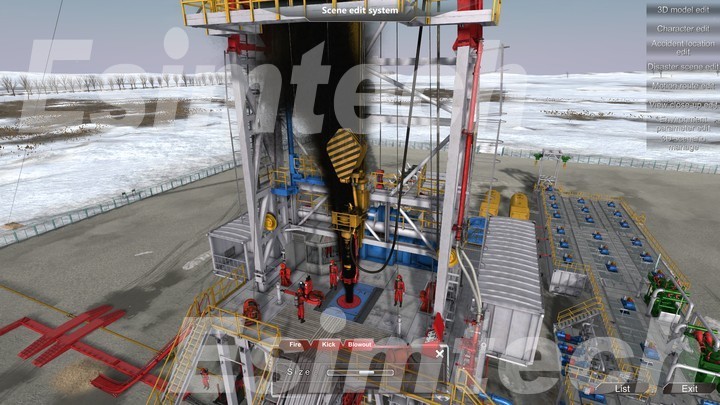
In order to transport oil in extremely harsh situations, where human error could have serious negative consequences, simulations are crucial in establishing confidence and operational proficiency among the personnel.
Future Outlook of Oil Transportation in Extreme Environments
The future of oil transportation in these environments will be shaped by advancements in technology, growing environmental awareness and a shift to sustainability and resilience.
Expanding Operations in Frontier Regions
With conventional oil reserves declining firms are investing in frontier areas which were previously considered unattainable or economically uneconomical. These areas, including Arctic reserve and ultra-deepwater areas and desert basins in remote locations are becoming more and more important points of exploration. In turn, oil transportation networks need evolve to link these new production zones to global markets. Future infrastructures will require greater resilience as well as autonomy and flexibility to perform efficiently even under the most extreme physical and climate stresses.
Integration of Smart and Autonomous Systems
The most transformational developments in the near future of transportation for oil involves the integration of autonomous and smart systems. The use of autonomous drones as well as AI-powered monitoring platforms and digital twin technology can enable real-time assessments of conditions in addition to predictive analyses across large and remote areas. These tools can significantly decrease the requirement for human presence in potentially hazardous environments and enable quicker response times to equipment malfunctions or environmental threats.
For instance, autonomous subsea vehicles will constantly inspect pipelines under water, and Arctic tankers could soon navigate through ice-covered water with the aid of AI-based route optimization systems, which reduces the chance of delays and collisions.
Emphasis on Climate-Resilient Infrastructure
Climate change is accelerating the uncertainty of extreme weather. Permafrost melting, stronger desert winds as well as rising sea levels as well as more frequently occurring storms demand infrastructure that is able to adapt and withstand. The pipelines of the future, as well as storage structures and tanker systems will more often contain climate-resistant material, flexible structure and temperature control technologies.
New designs will focus on modularity and speed of deployment to deal with environmental changes. For instance, retractable or floating pipeline segments could become common in areas impacted by winter floods or ice melt.
Green Logistics and Decarbonization Initiatives
While oil is still the most predominant fuel in the world but the future of its transport will be more in line with the goals of decarbonization. Green logistics will soon become the main element of sustainable strategies. This is a reference to the use of LNG-powered tankers as well as hybrid or electric support vessels, and low emission vehicles for oil transportation on land.
In addition, companies are investing in carbon offset and renewable energy integration and route design that is energy efficient to minimize the environmental impact of logistics involving oil. Intelligent transportation systems will focus on energy efficiency and emission reduction, backed by data-driven insight and analysis of the lifecycle.
Enhanced Environmental Monitoring and Governance
In the coming years the regulatory and environmental supervision of oil transport in harsh environments will be more rigorous and driven by technology. Authorities and international organizations will be expected to enforce more stringent standards, particularly in areas that are ecologically fragile like the Arctic and marine protected zones.
This will lead to the further development automation of environmental monitors like real-time satellite surveillance, water and air quality sensors, as well as automated compliance tools. Blockchain technology along with digital audit trails might be a standard procedure to ensure transparency in reports and traceability of transport of oil.
Collaboration and Knowledge Sharing Across Industries
Future oil transportation systems in extreme environments will gain from collaboration across sectors. The marine, aerospace and defense sectors, that have for a long time been operating in similar harsh environments, can offer transferable technologies and strategies for managing risk. Partnerships between energy companies research institutions, as well as tech companies can accelerate the development of new technologies in areas such as remote robotics, materials science along with extreme weather prediction.
These partnerships will not just enhance technical performance, but help in developing globally accepted best methods for sustainability, safety and resilience in the oil logistics.
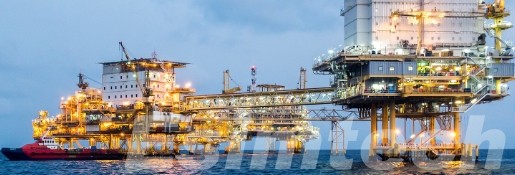
Final Thoughts
Oil transportation in extreme environments is a crucial combination of engineering ingenuity, environmental stewardship,and operational resilience. As these areas become more accessible and vital to the global energy supply, the industry’s commitment to safety sustainability, and sustainability and innovation will determine long-term success of oil and gas transportation in these harsh terrains.
